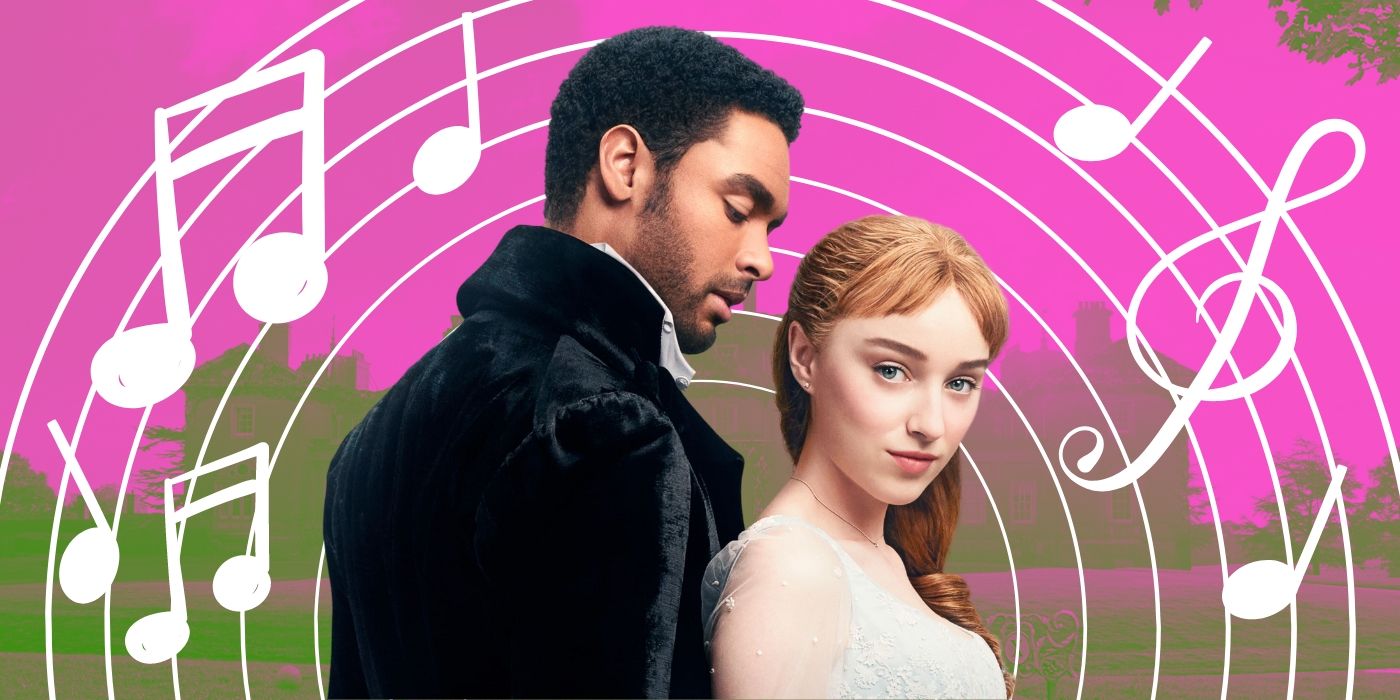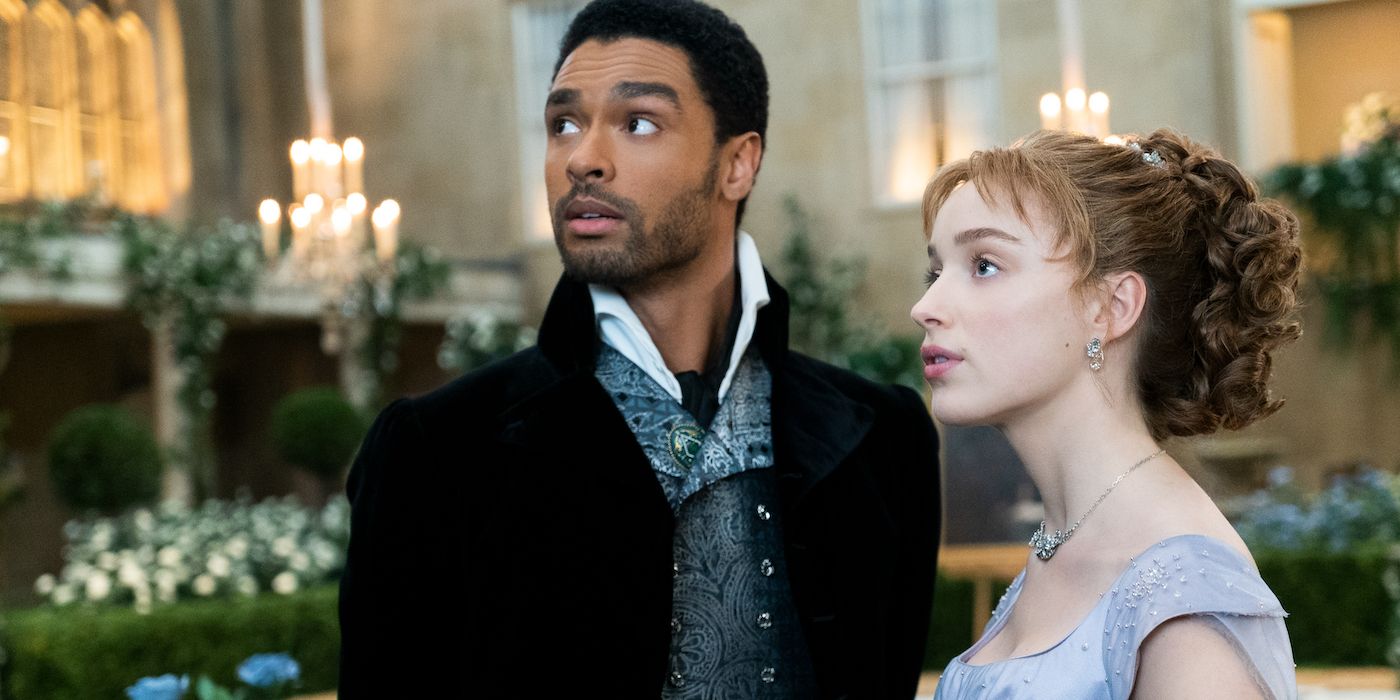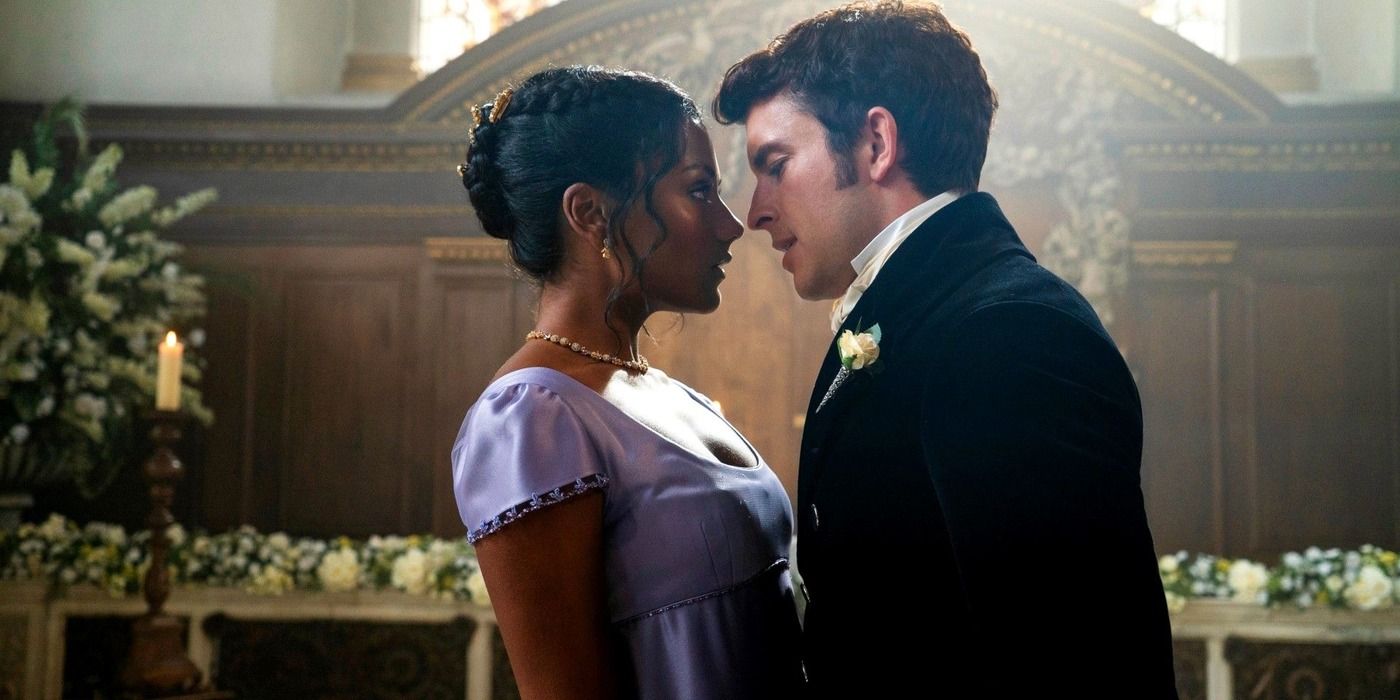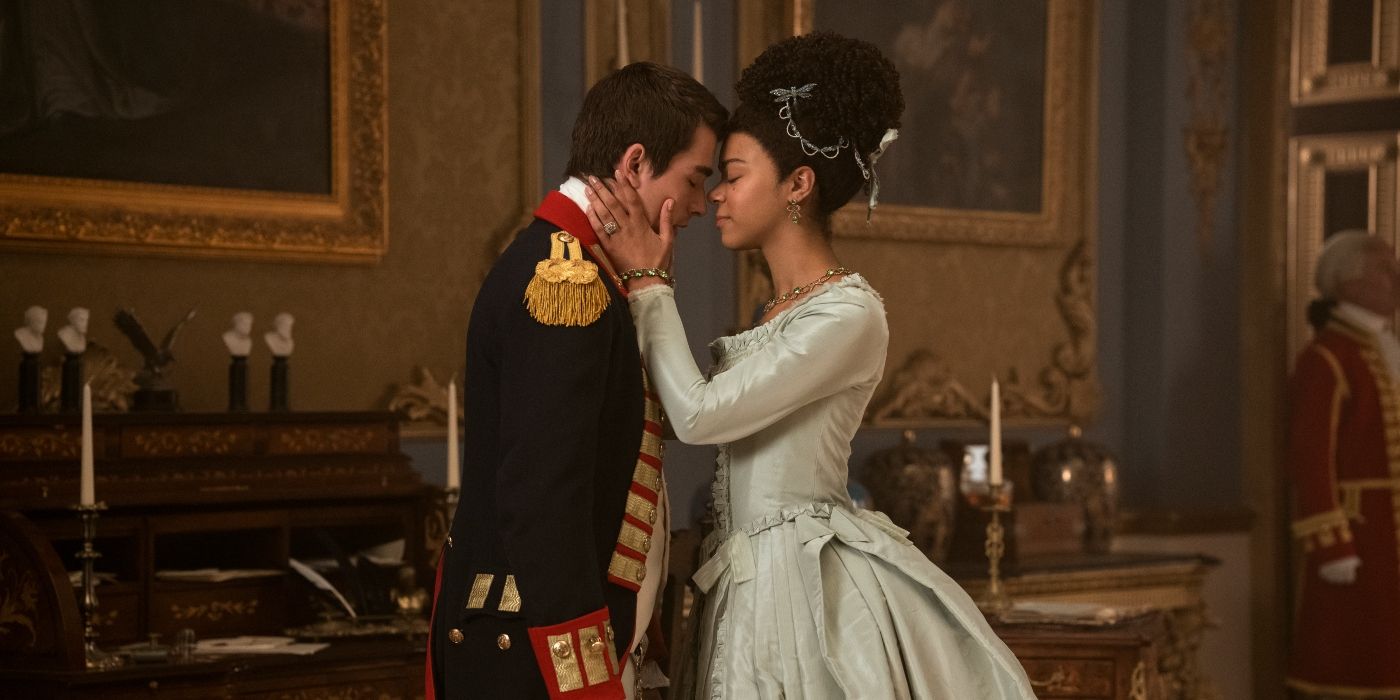Since Queen Charlotte landed on Netflix earlier this month, parent show Bridgerton has been a part of the cultural conversation once again. Despite obvious similarities, the prequel stands alone from the original series in several ways — Queen Charlotte primarily takes place in the 1760s, approximately 50 years before the events of Bridgerton, and features the franchise's most complex, poignant love story to date. However, one aspect of the Bridgerton legacy that Queen Charlotte reliably continues is its classical covers of contemporary pop songs, and we couldn’t be more thrilled about it. Since its first season, Bridgerton has featured a score comprised partially of strings versions of 20th and 21st century hits.
While this may seem like an odd choice to a non-viewer, it actually makes perfect sense — the soaring strings encapsulate a delightful atmosphere that makes it stand out among other historical pieces. There are plenty of period dramas with beautiful scores, but nowhere else will you find lavish balls, ceremonial dances, and ornate costumes against the backdrop of Madonna, and that’s one of the many things that makes Bridgerton so special. There are many reasons why the pop covers on Bridgerton work so well and why the series wouldn’t be the same without them; in a show that has always been an extravagant feast — both visually and audibly — the pop covers are perhaps the most crucial part to making Bridgerton so addictive.
'Bridgerton’s Pop Covers Represent the Modern Period Drama
It was clear from the first episode that Bridgerton is far from your typical period drama — two of its most lauded hallmarks are its racially diverse cast and its feminist depictions of sex that cater to the female gaze. Perhaps that’s why classical renditions of pop songs are the ideal musical accompaniment — they effortlessly bring the Regency period into the modern era. These covers firmly establish the show as being outside tradition, demonstrating to audiences that this is a world where the romanticized images of the past and the inclusivity of the present can co-exist. This is important, as the messages of Bridgerton are ones of acceptance, love, and diversity, with each season so far including an interracial relationship at the heart of its respective storyline. These themes are taken even further in Queen Charlotte, where the franchise finally introduces its first same-sex relationship. The covers on Bridgerton epitomize a period drama targeted to a modern audience, separating it from the flurry of period dramas that depict a largely white society and narrative that resembles the past with minimal contemporary influence.
This blend of tradition and modernity has evolved into Bridgerton’s brand, and the anachronistic musical choices have become part of its trademark. This is a smart choice from the show’s creators, as it not only makes the show memorable among its competitors but allows it to play with elements that would otherwise be restricted by the constraints of the genre. Unlike other period dramas, Bridgerton isn’t interested in being even a slightly historically accurate representation of the past, and as a result, doesn’t take itself too seriously. The pop covers are just one way in which the show invokes a fantastical sense of fun and camp that audiences love, and that has become synonymous with Bridgerton itself. The covers never feel out of place, which is a testament to the lighthearted, whimsy atmosphere of the show that makes it the ultimate guilty pleasure watch.
The Soundtrack Choices Perfectly Reflect the Characters’ Journeys
The music chosen to feature in Bridgerton may be idiosyncratic, but it isn’t random. Across both seasons and Queen Charlotte, the pop songs covered flawlessly mirror the journeys, struggles, and identities of the characters. This engages the audience in the narrative even further, giving them profound insight into the characters’ inner lives. These choices are clearly intentional in every way — as beautiful as they sound, the selections are not only about how well the compositions complement a scene melodically but also the lyrical content of the original songs. Despite the covers being purely instrumental, the meaning behind the songs and what the original artists convey is equally important to the soundtrack’s impact.
In Season 1, Daphne’s (Phoebe Dynevor) reclamation of her sexuality and womanhood are reflected in feminist anthems such as Ariana Grande’s "Thank U, Next" and Billie Eilish’s "Bad Guy." In Season 2, Kate Sharma’s (Simone Ashley) Indian culture is represented in a cover of "Kabhi Khushi Kabhi Gham," a Hindi-language song from a Bollywood film of the same title. This is used in a scene in which Kate, her sister Edwina (Charithra Chandran), and her stepmother Mary (Shelley Conn) gather the night before Edwina’s wedding to perform a Haldi ceremony, a traditional Indian pre-wedding ritual.
Queen Charlotte’s soundtrack constitutes songs solely by Black women originally — from SZA to Alicia Keys to Whitney Houston — reflecting Charlotte’s (India Amarteifio) experience as a Black woman joining British royalty. In particular, the use of 3 Beyoncé songs reflect her identity as a strong, empowered Black woman navigating her new environment. These music choices allow the audience to get to know the protagonists better as if they were real people alive today, sharing their curated Spotify playlists with the world.
The Score Accompanies 'Bridgerton's Most Memorable Moments
The true magic of Bridgerton's covers isn’t fully realized without the context of the scenes that they accompany. Some of Bridgerton’s key moments have been made even more unforgettable by the soundtrack underscoring them, and the unfolding drama combined with this music is a match made in heaven. Who can forget the montage in which Daphne and Simon (Regé-Jean Page) make love to Taylor Swift’s "Wildest Dreams" for 3 minutes straight in a variety of different locations? The moment is arguably the definitive one among many intimate scenes across the series, largely due to the music making it all the more noteworthy. The sweeping melody emphasizes the romance of the encounter, and the song has so much undeniable Gen-Z appeal that the scene could almost be mistaken for a TikTok edit.
There are few Bridgerton moments more iconic than Kate and Anthony’s (Jonathan Bailey) dance scene in the Season 2 finale, during which Miley Cyrus’ "Wrecking Ball" plays. The song choice symbolizes all the angst that the two have endured together, which they set aside for what they expect to be one final dance between them. The frame in which Kate, overcome with love, scrunches her eyebrows as she looks on at Anthony longingly, even inspired a viral TikTok trend where users attempted to replicate the expression -- and the song choice certainly helped the emotion resonate with viewers.
Bridgerton would not be what it is without its pop covers, and we wouldn’t want it any other way. The unique musical landscape has contributed to defining the show as part of the 2020s cultural zeitgeist, and classical pop music covers surged in popularity as a result. As we wait for Season 3, we can only sit and wonder — what songs will they transform next?




